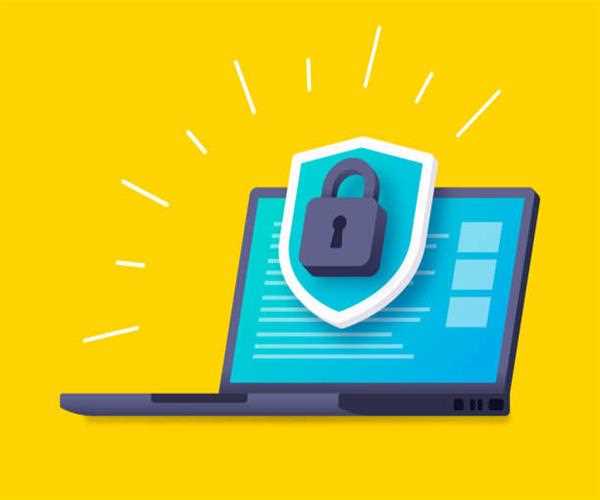Search here

28-Jul-2023 , Updated on 7/28/2023 6:55:03 AM
Cybersecurity threats in the digital age
Highlights
Rapid Technological Advancements- The digital age has witnessed an explosion of technological innovations, but it has also created a larger attack surface for cybercriminals to exploit.
Sophisticated Malware- Cyber threats now involve highly advanced and stealthy malware, such as ransomware, spyware, and advanced persistent threats (APTs).
Phishing Attacks- Cybercriminals use deceptive emails and websites to trick individuals into revealing sensitive information like passwords and financial data.
IoT Vulnerabilities- The proliferation of Internet of Things (IoT) devices has led to an increase in vulnerabilities, as many of these devices lack robust security measures.
Data Breaches- Large-scale data breaches have become more common, resulting in the exposure of sensitive information of millions of users.
State-Sponsored Cyber Attacks- Nation-states are involved in cyber warfare, launching attacks on critical infrastructure, government agencies, and private enterprises for political, economic, or espionage purposes.
In the rapidly evolving digital landscape, technology has become an integral part of our daily lives, transforming how we communicate, work, and conduct business. The digital age has brought unprecedented convenience and efficiency, but it has also introduced a multitude of cybersecurity threats that jeopardize the security and privacy of individuals and organizations alike. From sophisticated cyber-attacks to the proliferation of internet-connected devices, the threat landscape has grown exponentially, demanding robust measures to safeguard against potential vulnerabilities. This view delves into the various cybersecurity threats prevalent in the digital age and explores the crucial steps required to protect our interconnected world.
Malware Attacks
Malware, a portmanteau of "malicious software," represents one of the most prevalent and dangerous threats in the digital realm. Malware encompasses a broad range of malicious programs, including viruses, worms, trojan horses, ransomware, spyware, and adware, designed to exploit vulnerabilities in computer systems. These attacks can be devastating for individuals and businesses, causing data breaches, financial losses, and reputational damage.
Ransomware, in particular, has become a significant concern. It encrypts a victim's data, making it inaccessible until a ransom is paid to the attackers, often in cryptocurrency, leading to a surge in ransomware attacks targeting both individuals and organizations.
Phishing and Social Engineering
Phishing attacks are social engineering techniques that manipulate individuals into divulging sensitive information such as login credentials, financial data, or personal details. These attacks typically involve fraudulent emails, messages, or websites that mimic legitimate entities, deceiving users into believing they are interacting with a trusted source.
Sophisticated phishing campaigns have become increasingly difficult to detect, leading to successful breaches and data compromises. Users must remain vigilant and employ cybersecurity best practices, such as scrutinizing URLs and email sender addresses, to avoid falling prey to these scams.
Insider Threats
While external threats often dominate headlines, insider threats pose a significant risk to organizations. Insiders, including employees, contractors, or business partners, may intentionally or unintentionally compromise security measures, leading to data leaks, financial fraud, or intellectual property theft.
Implementing proper access controls, monitoring user behavior, and providing cybersecurity awareness training can help mitigate the risks associated with insider threats.
Internet of Things (IoT) Vulnerabilities
The proliferation of Internet of Things (IoT) devices has brought unparalleled convenience to homes and businesses, but it has also opened up new avenues for cyber-attacks. IoT devices, often lacking robust security measures, can be compromised to gain unauthorized access to networks or to conduct Distributed Denial of Service (DDoS) attacks.
Securing IoT devices requires manufacturers to prioritize security during the development process, as well as users being diligent in changing default passwords, keeping firmware up-to-date, and segmenting IoT devices from critical systems.
Data Breaches and Identity Theft
Data breaches have become distressingly common, affecting organizations across all sectors and compromising the personal and financial information of millions of individuals. Identity theft, a byproduct of data breaches, allows cybercriminals to impersonate victims, leading to financial fraud and reputational damage.

Organizations must adopt robust data protection measures, including encryption, access controls, and regular security audits, to safeguard sensitive information from falling into the wrong hands.
Advanced Persistent Threats (APTs)
Advanced Persistent Threats (APTs) are highly sophisticated and stealthy cyber-attacks often perpetrated by state-sponsored actors or advanced criminal organizations. These threats can remain undetected within a network for extended periods, quietly exfiltrating sensitive information or monitoring activities.
To defend against APTs, organizations need to implement multi-layered security defenses, conduct regular threat hunting, and foster a cybersecurity culture that emphasizes proactive detection and response.
Supply Chain Attacks
Supply chain attacks involve compromising the security of products or services during the manufacturing or distribution process. Cybercriminals target third-party vendors, contractors, or software providers to inject malware or vulnerabilities into the supply chain, with the intention of infiltrating larger organizations indirectly.
Organizations must carefully vet their supply chain partners, demand transparency about security practices, and conduct regular security assessments to minimize the risk of supply chain attacks.
The digital age has revolutionized the way we interact with the world, but it has also exposed us to an array of cybersecurity threats. From malware attacks and phishing to IoT vulnerabilities and supply chain compromises, the modern threat landscape is diverse and constantly evolving. To protect ourselves and our interconnected world, individuals and organizations must prioritize cybersecurity and adopt proactive measures.
By implementing robust security measures, educating users about potential threats, fostering a culture of cybersecurity awareness, and collaborating with industry experts, we can collectively combat cybersecurity threats and build a safer digital future. Only through such concerted efforts can we ensure that the benefits of the digital age continue to enrich our lives without compromising our security and privacy.

SEO and Content Writer
I am Drishan vig. I used to write blogs, articles, and stories in a way that entices the audience. I assure you that consistency, style, and tone must be met while writing the content. Working with the clients like bfc, varthana, ITC hotels, indusind, mumpa, mollydolly etc. has made me realized that writing content is not enough but doing seo is the first thing for it.
Join Our Newsletter
Subscribe to our newsletter to receive emails about new views posts, releases and updates.
Copyright 2010 - 2025 MindStick Software Pvt. Ltd. All Rights Reserved Privacy Policy | Terms & Conditions | Cookie Policy